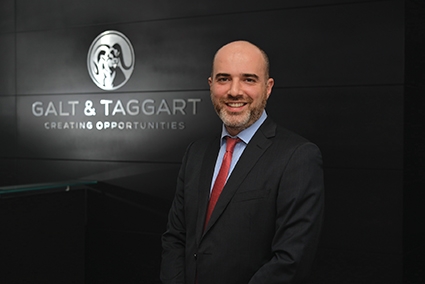Galt & Taggart - Making Investing in Georgia Easier
In September 2014, the Investment Management arm of Bank of Georgia was rebranded as Galt & Taggart, a name that goes all the way back to 2000. The firm has invested a great deal of resources since then in becoming the major player in the Georgian investment banking sphere. G&T built the first research house in the country from the ground up, providing macroeconomic, sector, and fixed income (Georgian Railway and Georgian Oil & Gas Corporation) coverage. Furthermore, Galt & Taggart, already the leading brokerage in Georgia, recently announced a landmark partnership with Saxo Bank, which will enable it to offer clients a highly adaptive trading experience, with professional tools, insights, and world-class execution.
Georgia Today met exclusively with Archil Gachechiladze, Deputy CEO, Investment Management of Bank of Georgia, and Chairman of its subsidiary, JSC Galt & Taggart, a leading firm in investment banking and investment management services in Georgia.
International Finance Magazine recently named Galt & Taggart the Best Investment Bank in Georgia. What were its important achievements over the past year?
We are at a stage when the capital markets should be reactivated in Georgia. The first steps were taken in this direction last year, with three different bonds issued by private companies, in addition to the issuances of international finance organizations. G&T acted as the lead placement agent for these transactions and is the clear leader on the market in this regard. The market is small at present, but we have great expectations.
We launched a new product for Georgia. Depositors faced with lower interest rates today need to get used to bonds, which are higher-risk, higher-returns instruments. To ease this transition for the Georgian investor, we started with the bonds of our subsidiaries, which were very well received. Notably, not only our relatively wealthy clients, but foreign funds showed significant interest.
We started with GLC, our leasing subsidiary, which launched a three-year bond, placed a 20 million bond for m2 Real Estate, a significant amount for the local market, and another 15 million GEL three-year issuance by Evex. 10, 15, 20 million GEL bonds are now a reality as a new form of funding for Georgian companies.
What was the biggest challenge this year?
The Lari depreciation was a big shock for the Georgian economy. Many families have had difficulties, especially those with bank loans in US dollars. But the economy endured the hardships without losing a lot of reserves, unlike other countries. Azerbaijan has spent 55% of its foreign reserves, whereas we only spent 9%. I think we fared considerably better than the rest of the region.
Bank of Georgia (BOG) had announced a new initiative of GEL-denominated bonds, but had to suspend it due to the Lari depreciation. It’ll be a significant step forward for the economy once local currency bonds are accepted by NBG for liquidity measures.
Are there any obstacles for investors in Georgia?
Georgian legislation is quite good, with no big barriers. Bonds carry a 5% income tax that should be removed, in our opinion. The Minister of Finance announced readiness to work on this issue, so bonds can compete with bank loans.
What are G&T’s future plans and projects?
It is good news for our company as well as the Georgian economy that many companies have approached us. We will soon announce another bond issuance by a private company. For now, I can say that it is a Georgian company in the food industry. In addition, there are several other companies we are working with. There is significant demand for GEL-denominated bonds. We are awaiting next steps for NBG to recognize Lari bonds for bank liquidity requirements.
What are the advantages of bonds?
We believe that now is a good time for investment banking in Georgia. On the one hand, there are the depositors faced with lower interest rates on foreign currency deposits. Rates on one-year USD deposits of leading banks have dropped to 4% from a high of 12-13% in previous years. On the other hand, corporate loan issuances are down. The National Bank applies a high risk weighting to dollar-denominated loans. Therefore, issuing 9-10% bonds would be beneficial for companies and would allow them to diversify their funding sources, attracting investors in addition to traditional bank financing. Depositors will be able to earn 9% on bond issuances of companies they know well instead of 4% on bank deposits. We believe in the potential of this market and will continue to play an important role in its development.
What is your outlook on the Georgian economy?
Growth in Georgia in 2015 mainly reflected a deterioration in the external environment, as the region has been hit hard by falling oil prices, related regional currency depreciations, and negative repercussions from the recession in Russia. However, with the floating exchange rate regime and prudent fiscal framework, Georgia managed to remain competitive and keep macro fundamentals healthy. Despite economic troubles in the region, Georgia remains an attractive tourism destination. At the same time, the business supportive environment attracts foreign investors, which allows the country to realize its potential in transport, logistics, energy, and hospitality sectors, among others. As growth is expected to pick up modestly in the region in 2016, Georgia’s healthy macro fundamentals, economic diversification, low oil prices and EU DCFTA provide a solid base for a strong pick up and a positive outlook for Georgia’s economy in 2016.
Ana Akhalaia











